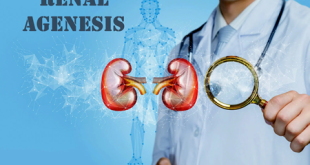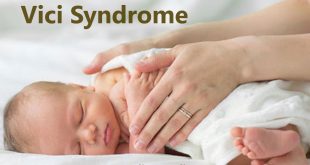Definition
Trisomy 13, also called Patau’s syndrome, is a chromosomal condition associated with severe intellectual disability and physical abnormalities in many parts of the body. Individuals with trisomy 13 often have heart defects, brain or spinal cord abnormalities, very small or poorly developed eyes (microphthalmia), extra fingers or toes, an opening in the lip (a cleft lip) with or without an opening in the roof of the mouth (a cleft palate), and weak muscle tone (hypotonia). Due to the presence of several life-threatening medical problems, many infants with trisomy 13 die within their first days or weeks of life. Only five percent to 10 percent of children with this condition live past their first year.
History
Klaus Patau was a German-born, American human geneticist. Patau et al described the syndrome in 1960. The clinical appearance of trisomy 13 was first described by Erasmus Bartholin in 1657 but he was unaware of the etiology.
Epidemiology of Patau’s Syndrome
Trisomy 13 occurs in 1 of 10,000-16,000 births and the incidence increases with increased maternal age. The risk of recurrence in future pregnancies is 1%. Most cases are not inherited and result from the random formation of eggs and sperm in healthy parents.
The program has been tracking Trisomy 13 among live births in select counties since 2005 and is gradually expanding state-wide.
- Using data from births to Hennepin and Ramsey county residents between 2009-2013, we found that less than 1 baby was born with Trisomy 13 per 10,000 births.
- Using this data, we estimate about 7 babies are born with Trisomy 13 every year in Minnesota.
Types
There are three types of trisomy 13
Full Trisomy 13: The existence of a third copy of chromosome 13 in all of the cells. About 95% of cases of Trisomy 13 are this type.
Mosaic Trisomy 13: The existence of a third copy of chromosome 13 in some of the cells. About 5% of cases of Trisomy 13 are this type.
Partial Trisomy 13: The existence of a part of a third copy of chromosome 13 in the cells. Less than 1% of cases of Trisomy 13 are this type.
Pathophysiology
Patau syndrome is caused by the presence of an extra copy of chromosome 13, generally present at conception and transmitted to every cell in the body. Although the exact mechanisms by which chromosomal trisomies disrupt development are unknown, considerable attention has been paid to trisomy 21 as a model system for the autosomal trisomies.
Normal development requires 2 (and only 2) copies of most of the human autosomal genome; the presence of a third copy of an autosome is generally lethal to the developing embryo. Therefore, trisomy 13 is distinctive in that it is one of only 3 autosomal trisomies for which development can proceed to live birth.
In fact, trisomy 13 is the largest autosomal imbalance that can be sustained by the embryo and yet allows survival to term. Complex physiologic structures, such as those found in the CNS and heart, appear to be particularly sensitive to chromosomal imbalance, either through the actions of individual genes or by the destabilization of developmental processes involving many genes in concert.
Risk factors of Patau’s Syndrome
- People with a personal or close family history of delivery of a child with this syndrome are at a greater risk of having it. Increase in maternal age also increases the susceptibility to this disorder, although the risk is not as pronounced as in Edward’s Syndrome or Down Syndrome.
- Unless one of the parents happen to be a carrier of a translocation, the risk of having another child with this disease is less than 1%. This is even lower than that of Down syndrome – a congenital disease arising due to the presence of an additional 21st chromosome.
Causes
- Trisomy 13 Syndrome takes place due to a chromosomal anomaly, when an additional copy of the genetic material found on the 13th chromosome is carried forward during fertilization. If all of the genetic material is copied and taken forward, then it is termed as a Complete Trisomy 13, else it is termed Partial Trisomy 13
- The extra material causes 47 chromosomes (23 pairs and a single extra 13th chromosome) to be present in the developing fetus, leading to serious medical complications. Under normal circumstances, a healthy egg and sperm contributes 23 (haploid) chromosomes each, totaling 46 chromosomes to the developing fetus
- It is researched that the cause may lie either in the egg cell or in the sperm cell (maybe a cell division error), which after fertilization creates three copies (trisomy) of the 13th chromosome, rather than 2 normal copies
- In some cases, all body cells are not found to have this extra chromosome, but only a small proportion of cells are found to have them. This causes a mixed cell population with different chromosome numbers (quantity) known as ‘Mosaic Patau Syndrome’. In such cases, the severity of the signs and symptoms are less than those observed with a Complete T13 Syndrome. Despite this, a Partial Mosaic Patau Syndrome could still be fatal
Symptoms
Some of the common symptoms of trisomy 13 include:
- Clenched hands (with outer fingers on top of the inner fingers)
- Close-set eyes
- Hernias: umbilical hernia, inguinal hernia
- A hole, split, or cleft in the iris of the eye (coloboma)
- Low-set ears
- Scalp defects such as missing skin
- Seizures
- Single palmar crease
- Skeletal (limb) abnormalities
- Small head (microcephaly)
- Small lower jaw (micrognathia)
- Undescended testicle (cryptorchidism)
Cleft lip palate
Six toes in a baby with Patau syndrome
Six fingers in a baby with Patau syndrome
Complications of Patau’s Syndrome
Complications begin almost immediately. Most infants with trisomy 13 have congenital heart disease.
Complications may include:
- Breathing difficulty or lack of breathing (apnea)
- Deafness
- Feeding problems
- Heart failure
- Seizures
- Vision problems
Diagnosis and test
Chromosomal studies (karyotyping using a sample of the blood or amniotic fluid) for Trisomy 13 Syndrome can confirm the type and severity of the disorder (such as complete, partial or mosaic). Other exams and tests that are performed may include:
- Ultrasound scans or x-ray images to study internal organ arrangement
- MRI or CT scans of the brain to check for holoprosencephaly (lack of growth of the embryonic forebrain)
- Studies to detect congenital heart defects
- Other physical findings are correlated with the above
Many clinical conditions may have similar signs and symptoms. Your healthcare provider may perform additional tests to rule out other clinical conditions to arrive at a definitive diagnosis.
Treatment
- Treatment of Patau syndrome focuses on the particular physical problems with which each child is born.
- Many infants have difficulty surviving the first few days or weeks due to severe neurological problems or complex heart defects. Surgery may be necessary to repair heart defects or cleft lip and cleft palate.
- Physical, occupational, and speech therapy will help individuals with Patau syndrome reach their full developmental potential.
Prevention of Patau’s Syndrome
- There is no way to prevent the occurrence of trisomy 13. Prenatal screening and diagnosis are available in the general population. First- and second-trimester serum screening does not screen for trisomy 13.
- Level II fetal ultrasonography is around 80%-90% sensitive for detecting some abnormality associated with trisomy 13.
- Prenatal diagnosis by chorionic villus sampling (10-13 weeks’ gestation) or amniocentesis (15-18 weeks’ gestation) is offered to women with an abnormal ultra-sonogram or advanced maternal age (considered to be 35 years of age or greater at delivery in most institutions), or a family history of chromosome abnormalities.
- These tests look directly at the chromosomal makeup of the fetus and are thus considered 100% sensitive for trisomy 13, but they carry a risk of the miscarriage of around 1 in 200-400 pregnancies.
 Diseases Treatments Dictionary This is complete solution to read all diseases treatments Which covers Prevention, Causes, Symptoms, Medical Terms, Drugs, Prescription, Natural Remedies with cures and Treatments. Most of the common diseases were listed in names, split with categories.
Diseases Treatments Dictionary This is complete solution to read all diseases treatments Which covers Prevention, Causes, Symptoms, Medical Terms, Drugs, Prescription, Natural Remedies with cures and Treatments. Most of the common diseases were listed in names, split with categories.







